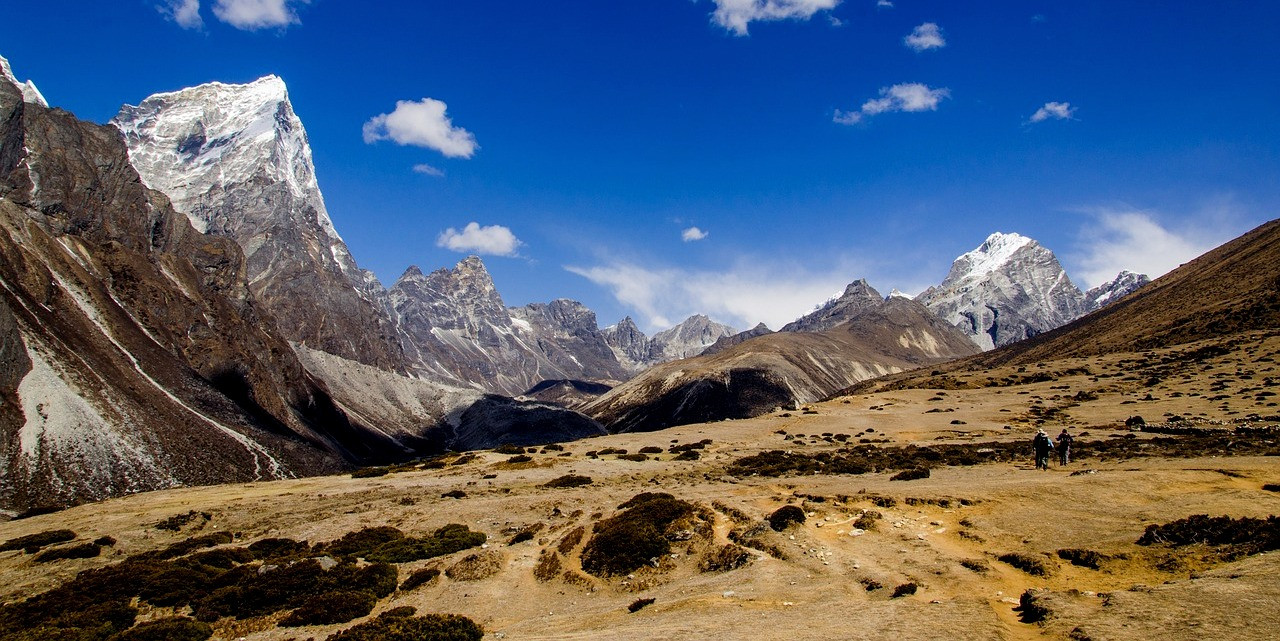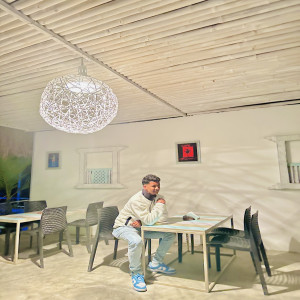Why Fall?
Fall is widely regarded as the best time to trek in Nepal due to several compelling reasons:
-
Stable Weather: Fall, particularly from September to November, offers the most stable weather conditions in the Himalayas. After the monsoon season ends, the dust and debris are cleared from the air, resulting in clearer skies and better visibility. This makes it easier and safer to navigate the trails.
-
Optimal Temperature: The temperatures during fall are moderate, which provides a comfortable trekking climate. It's neither too hot at lower altitudes nor too cold in the higher regions, making it ideal for long treks. As winter approaches, the cooler temperatures at higher altitudes are manageable with proper gear.
-
Clear Mountain Views: The post-monsoon period ensures that the skies are clear, offering spectacular views of the mountain peaks. The visibility is often at its peak during the fall, which is perfect for photographers and nature lovers looking to capture the majestic Himalayan scenery.
-
Cultural Festivities: Fall coincides with some of the most significant festivals in Nepal, such as Dashain and Tihar. Trekking during this time provides a unique opportunity to experience the vibrant local culture and participate in celebrations, which adds a rich cultural layer to the trekking experience.
-
Busy Yet Vibrant Trails: Fall is the peak trekking season in Nepal, which means the trails are bustling with activity. Trekkers can enjoy the social aspects of trekking, meeting people from all over the world and sharing experiences. While the popular routes can be crowded, this also means that the infrastructure and services along the trails, such as teahouses and lodges, are fully operational and offer good service.
-
Safer Travel Conditions: The dry weather leads to safer trekking conditions, reducing the risks of landslides and slippery paths that are common during the monsoon. This is crucial in the Himalayas, where weather conditions can significantly impact trekking experiences.
These factors make fall an exceptional time for trekking in Nepal, offering a blend of ideal trekking conditions, breathtaking natural beauty, and rich cultural experiences.
Everest Base Camp Trek
The Everest Base Camp Trek is one of the most iconic and celebrated treks in the world, attracting adventurers keen to experience the allure of Mount Everest up close. This trek not only offers a glimpse of the highest point on Earth but also provides a deep insight into the culture and lifestyle of the Sherpa people, the famed mountain dwellers of Nepal. Here’s a detailed look at what this trek involves:
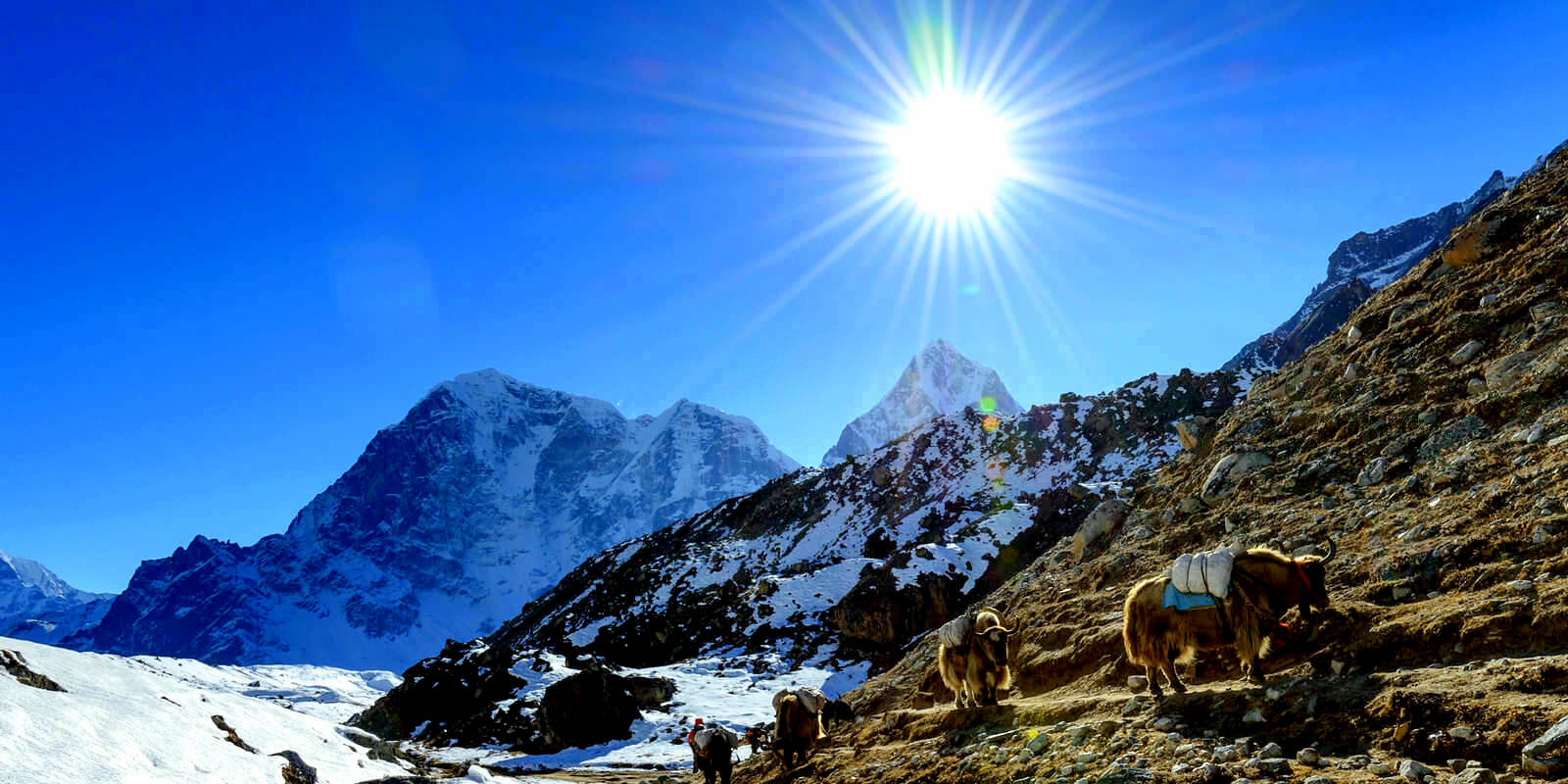
Overview
-
Duration: Typically, the trek takes about 12 to 14 days.
-
Starting Point: The trek usually begins with a flight from Kathmandu to Lukla, a small town with a runway famously known as one of the most dangerous airports in the world.
-
Altitude: The trek reaches its highest point at Kala Patthar, at 5,545 meters (18,192 ft), which provides the most accessible point to view Mount Everest from base camp since the actual base camp doesn't offer a view of the summit.
Highlights
-
Namche Bazaar: Often referred to as the gateway to the high Himalayas, this bustling market town offers trekkers a chance to acclimatize and explore local crafts, food, and culture.
-
Tengboche Monastery: Situated at 3,867 meters, this is one of the largest monasteries in the Khumbu region and a spiritual center for the Sherpa community. The panoramic views of Everest, Ama Dablam, and other peaks from here are breathtaking.
-
Wildlife and Flora: As you trek through the Sagarmatha National Park, you might encounter unique wildlife like the Himalayan Tahr, Musk Deer, and several species of birds. The region also features a range of alpine flora.
- Sherpa Culture and Hospitality: The trek offers a wonderful opportunity to immerse in the Sherpa way of life, visiting local homes, monasteries, and museums.
The Everest Base Camp Trek is a journey of a lifetime, filled with stunning natural beauty, challenging treks, and rich cultural exchanges. It’s an opportunity to witness the legendary world of the high Himalayas.
Annapurna Circuit Trek
The Annapurna Circuit Trek is a globally renowned trek that circles the Annapurna massif in Nepal, offering an extraordinary variety of landscapes and cultural experiences. This trek is celebrated for its dynamic changes in scenery, from lush subtropical forests and paddy fields to high-altitude plateaus and the arid peaks of the Himalayas. Here’s an in-depth look at what makes the Annapurna Circuit Trek a must-do for avid trekkers:
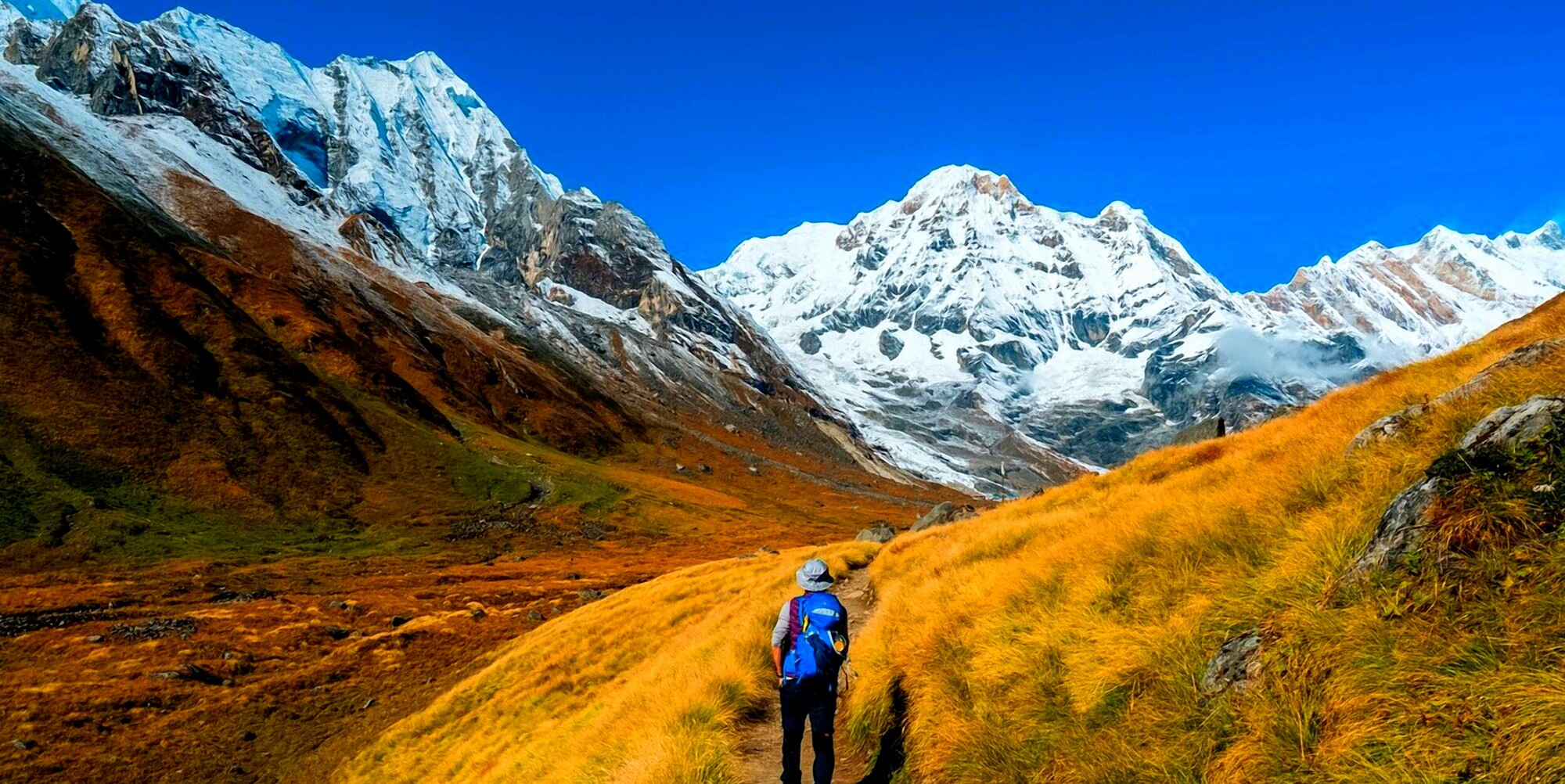
Overview
-
Duration: The trek typically takes about 12 to 21 days depending on the chosen route and walking pace.
-
Starting Point: The trek traditionally starts in Besisahar or Bhulbhule in the Marsyangdi River valley and concludes in the Kali Gandaki Gorge.
-
Altitude: The highest point of the trek is Thorong La pass at 5,416 meters (17,769 ft).
Highlights
-
Diverse Climates and Ecologies: As trekkers ascend from lowland paddy fields to high-altitude Thorong La pass, they experience a dramatic change in climate and vegetation.
-
Cultural Diversity: The trek passes through villages of various ethnic groups, including Gurungs, Manangis, and Thakalis, offering trekkers a profound cultural immersion.
-
Manang Village: Before crossing the Thorong La, trekkers reach Manang, a significant and culturally rich village where many choose to acclimatize and explore local customs and lifestyles.
-
Muktinath Temple: After crossing Thorong La, trekkers descend to Muktinath, an important pilgrimage site for both Hindus and Buddhists, symbolizing the religious harmony found in Nepal.
-
Marpha Village: Known for its apple orchards and local brandy, Marpha is a charming Thakali village that provides a delightful stop on the descent.
The Annapurna Circuit Trek remains one of the most comprehensive trekking experiences in Nepal, offering an awe-inspiring exploration of the natural and cultural splendor of the Annapurna region. Its reputation as a challenging yet rewarding trek makes it a sought-after journey for those looking to experience the grandeur of the Himalayas.
Manaslu Circuit Trek
The Manaslu Circuit Trek is a spectacular trek in Nepal that encircles the majestic Mount Manaslu, the eighth highest peak in the world, standing at 8,163 meters (26,781 ft). Known for its remote and untouched beauty, the trek offers a more secluded experience compared to the more popular Everest Base Camp and Annapurna Circuit treks. The Manaslu Circuit has gained popularity for its pristine landscapes, cultural richness, and the challenging yet rewarding trekking experience it provides.
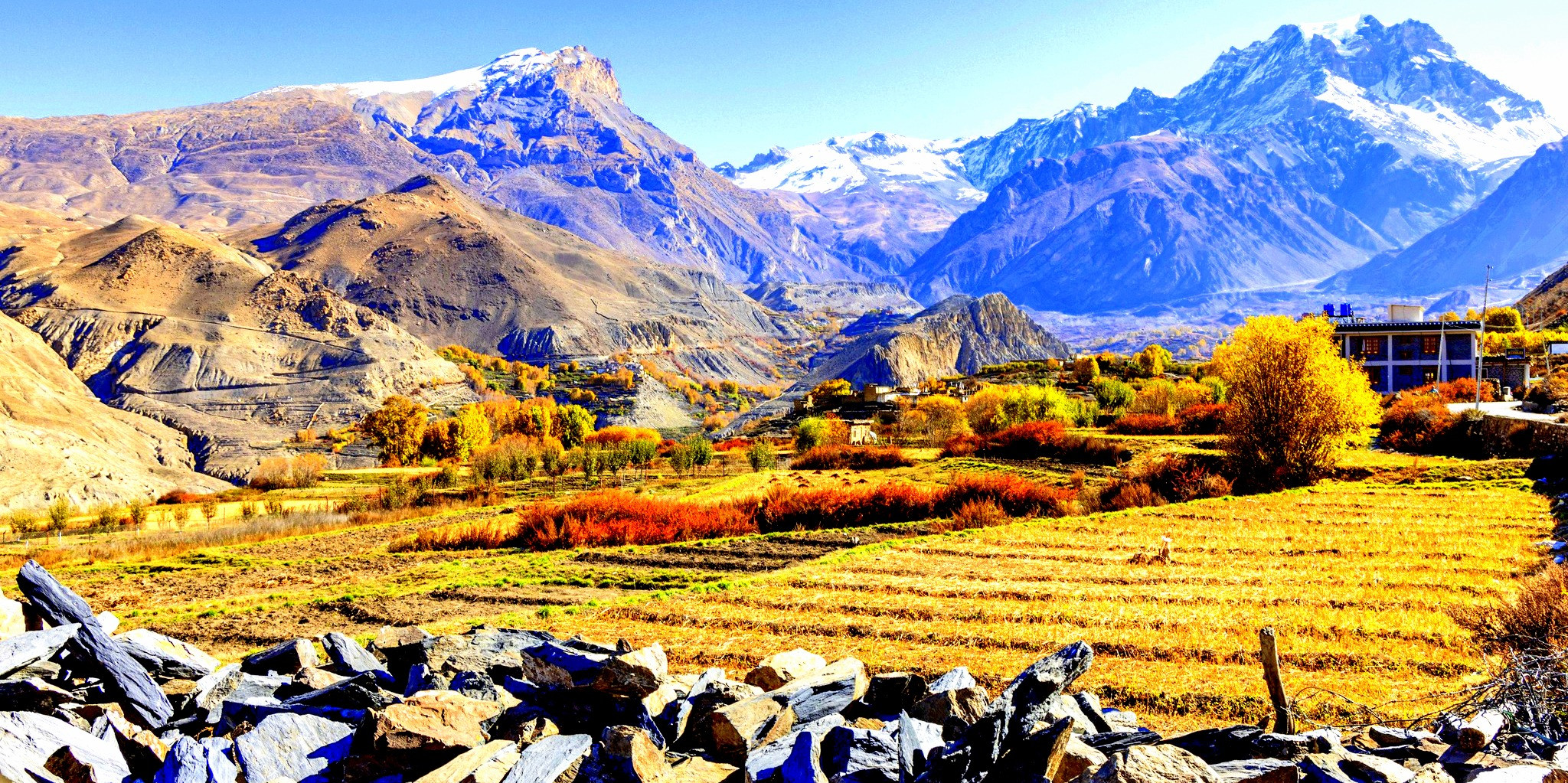
Overview
-
Duration: Typically, the trek takes about 14 to 20 days, depending on the chosen route and walking pace.
-
Starting Point: The trek usually begins in Soti Khola and concludes in Besisahar, which is also the starting point for the Annapurna Circuit.
-
Altitude: The highest point on the trek is the Larkya La Pass, which reaches an altitude of 5,106 meters (16,752 ft).
Highlights
-
Remote Trails: The Manaslu Circuit is less trafficked than other popular routes, offering a more intimate experience with nature and local communities.
-
Cultural Diversity: The trek traverses through regions inhabited by various ethnic groups, including the Nubri and Tsum, where ancient Buddhist traditions are still a way of life.
-
Scenic Diversity: From lush forests in the lower regions to stark, rugged high-altitude landscapes, the trek offers a dramatic shift in scenery.
-
Larkya La Pass: Crossing the Larkya La Pass is a highlight and a challenge, providing spectacular views of the Himalayas, including Manaslu itself.
-
Conservation Area: The trek moves through the Manaslu Conservation Area, which is home to diverse flora and fauna, including endangered species such as the snow leopard and the red panda.
The Manaslu Circuit Trek stands out for its remote location, cultural depth, and stunning natural beauty. It's an excellent choice for trekkers looking to explore less crowded but equally breathtaking parts of the Nepalese Himalayas.
Langtang Trek
The Langtang Trek is a captivating journey into one of Nepal's most accessible trekking regions, offering a profound mix of natural beauty and cultural richness. Situated north of Kathmandu, close to the Tibetan border, this trek provides an excellent introduction to Himalayan adventures with its shorter duration and moderate difficulty level.
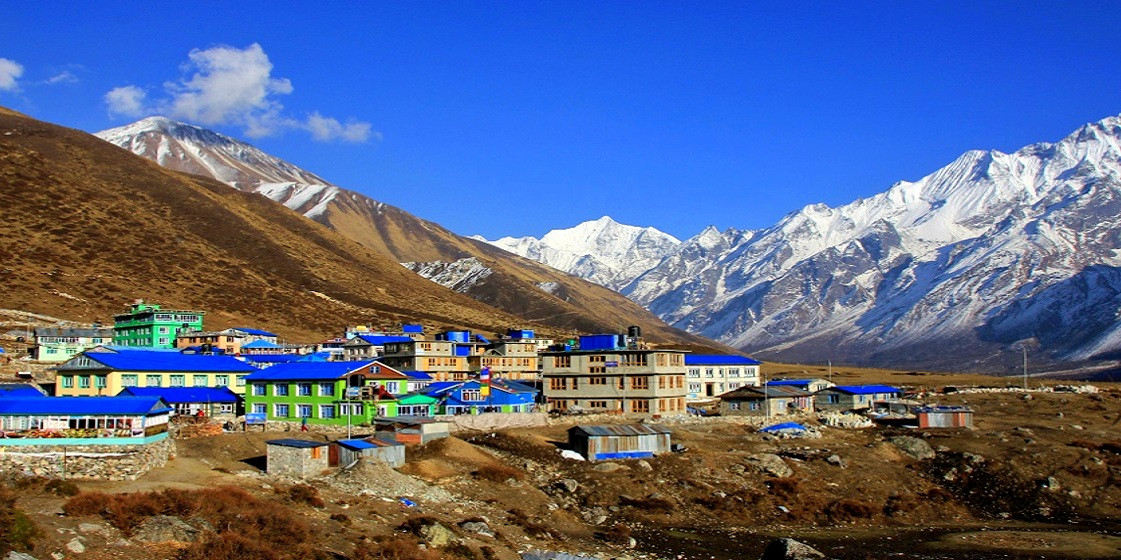
Overview
-
Duration: The trek can be completed in about 7 to 12 days, depending on the specific route and pace of trekking.
-
Starting Point: The journey typically begins in Syabrubesi, a small town that can be reached by bus from Kathmandu.
-
Altitude: The highest point reached is Kyanjin Gompa at around 3,870 meters (12,697 feet), with an optional hike to Tserko Ri at 5,000 meters (16,404 feet).
Highlights
-
Langtang National Park: Trek through the beautiful Langtang National Park, which offers a chance to see diverse wildlife, including the elusive red panda and various species of birds.
-
Tamang Culture: The region is predominantly inhabited by the Tamang people, whose culture and traditions are heavily influenced by Tibetan Buddhism.
-
Kyanjin Gompa: This small village is the furthest and highest point for most treks in the valley, with the local monastery being a focal point for visitors.
-
Scenic Views: Enjoy stunning views of Langtang Lirung and the surrounding Himalayan peaks, as well as beautiful forests of rhododendron and bamboo.
-
Cheese Factory: Visit the cheese factory in Kyanjin Gompa, which produces cheese from yak milk, a unique aspect of the local economy.
The Langtang Trek offers an enchanting mix of natural beauty, cultural exposure, and a relatively easy route, making it an excellent choice for first-time trekkers in the Himalayas or those looking for a shorter Himalayan adventure.
Ghorepani Poon Hill Trek
The Ghorepani Poon Hill Trek, often referred to as the Poon Hill Trek, is one of the most popular and accessible treks in the Annapurna region of Nepal. This trek is renowned for its spectacular sunrise views over the Himalayas and its relatively easy trail, making it suitable for trekkers of all levels, including families and those with limited time. It offers a wonderful blend of natural beauty and cultural insights into the lives of the Gurung and Magar communities.
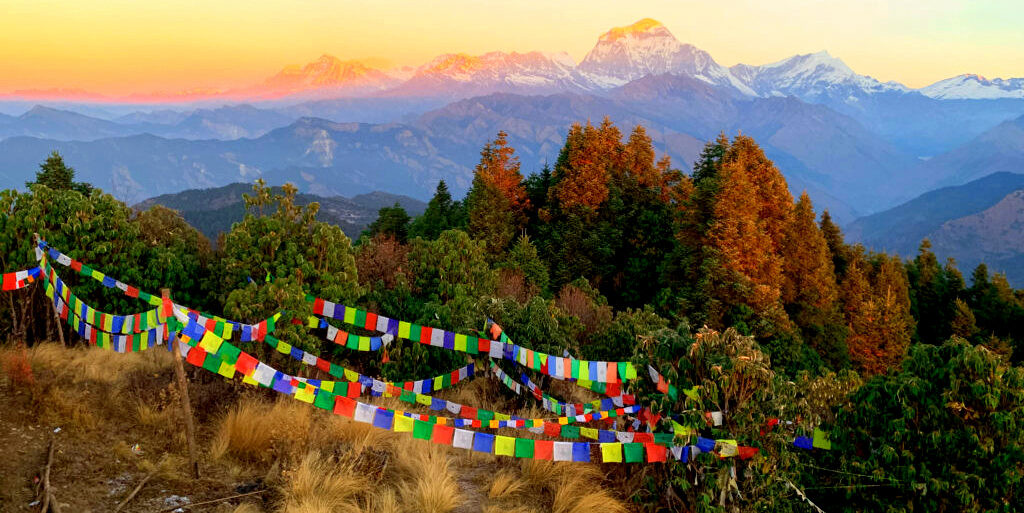
Overview
-
Duration: The trek typically lasts between 4 to 5 days, making it an ideal choice for those who do not want to commit to the longer and more strenuous treks.
-
Starting Point: The trek usually starts and ends in Nayapul, which is about a one to two-hour drive from Pokhara.
-
Altitude: The highest point of the trek is Poon Hill itself, which stands at an altitude of 3,210 meters (10,531 feet).
Highlights
-
Poon Hill Sunrise: The highlight of this trek is the early morning climb to Poon Hill to witness a breathtaking sunrise over the Annapurna and Dhaulagiri ranges.
-
Ethnic Villages: The trail winds through beautiful villages inhabited by the Gurung and Magar communities, offering trekkers a glimpse into the rural lifestyles of Nepal’s ethnic groups.
-
Rhododendron Forests: In spring, the forests along the trail burst into color with blooming rhododendrons, creating a vibrant backdrop to the trek.
-
Spectacular Mountain Scenery: Besides the panoramic sunrise views, the trek offers continuous scenic vistas of mountains including Annapurna South, Annapurna I, Dhaulagiri, and Hiunchuli.
The Ghorepani Poon Hill Trek is a fantastic option for those looking to experience the beauty of the Himalayas without the commitment required by longer treks. It combines natural beauty, easy accessibility, and cultural exposure, making it a rewarding experience for any trekker.
Upper Mustang Trek
The Upper Mustang Trek offers a unique trekking experience, quite distinct from the green landscapes typically associated with other Himalayan treks in Nepal. Known as the "Last Forbidden Kingdom," it wasn't until the 1990s that this region was opened to foreign trekkers. The trek leads through the semi-arid desert with deep ravines and rock shelves, flanked by snowy peaks. It provides a stark contrast to the lushness of other Nepalese treks and offers a glimpse into the ancient traditions and lifestyles that have remained unchanged for centuries.
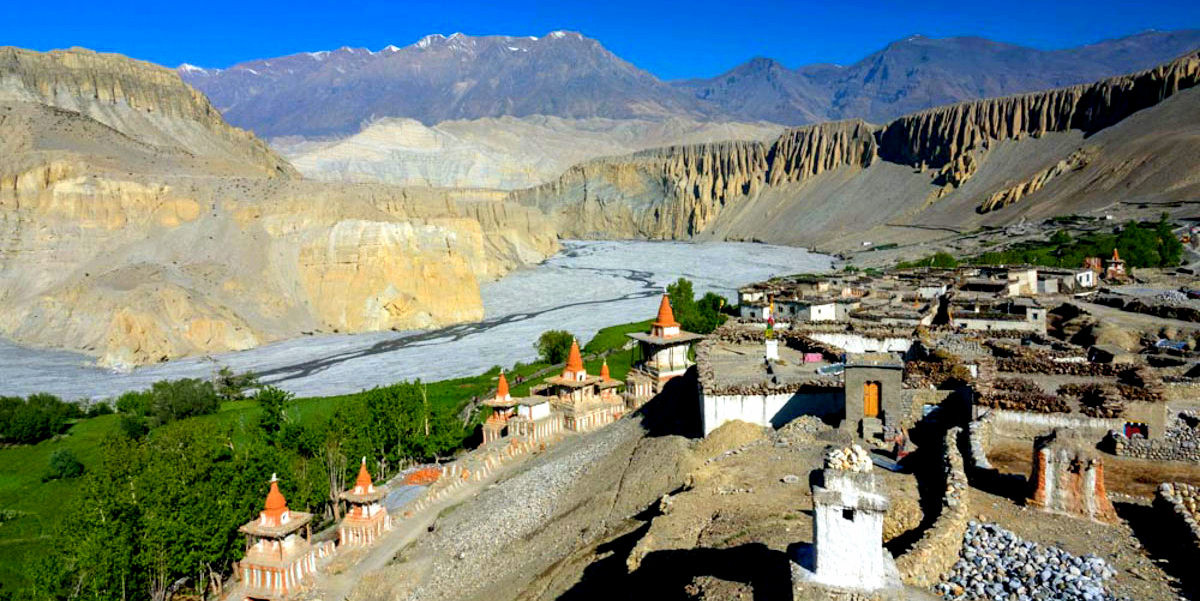
Overview
-
Duration: The trek generally takes about 10 to 14 days, depending on starting and ending points.
-
Starting Point: The trek usually begins at Jomsom, accessible by flight from Pokhara, following a short trek from the town of Kagbeni, the gateway to Upper Mustang.
-
Altitude: The trek reaches its highest point at Lo Manthang, the capital of Upper Mustang, which lies at an altitude of 3,840 meters (12,600 feet).
Highlights
-
Lo Manthang: A walled city that once served as the capital of the ancient Kingdom of Mustang, offering an extraordinary look at medieval Tibetan culture.
-
Ancient Monasteries: Visit ancient Tibetan Buddhist monasteries like Ghar Gompa and Thubchen Gompa which are among the oldest in the world.
-
Stunning Desert Landscape: The trek traverses stark landscapes that resemble Tibetan plateaus more than the lush greenery of other parts of Nepal, featuring unique rock formations and caves.
-
Tiji Festival: If timed right, trekkers can experience the Tiji Festival in Lo Manthang, a three-day ritual known as "The Chasing of the Demons," one of the region's most important religious festivals.
-
Restricted Area Trekking: Upper Mustang is a restricted area in Nepal, providing a sense of exclusivity and adventure as trekking here requires a special permit.
The Upper Mustang Trek is perfect for those looking to experience the raw, untouched culture and landscapes of the ancient Tibetan kingdom. This trek is not just a physical journey but a voyage back in time, offering insights into a way of life preserved for centuries.
Three Passes Trek
The Three Passes Trek is an exhilarating and comprehensive trekking adventure in the Everest region of Nepal. It is known for being one of the most challenging and rewarding treks, as it involves crossing three high mountain passes, each offering stunning views of the Himalayas. This trek is perfect for experienced trekkers who are looking for an adventure that combines high-altitude trekking with incredible natural beauty and cultural insights.
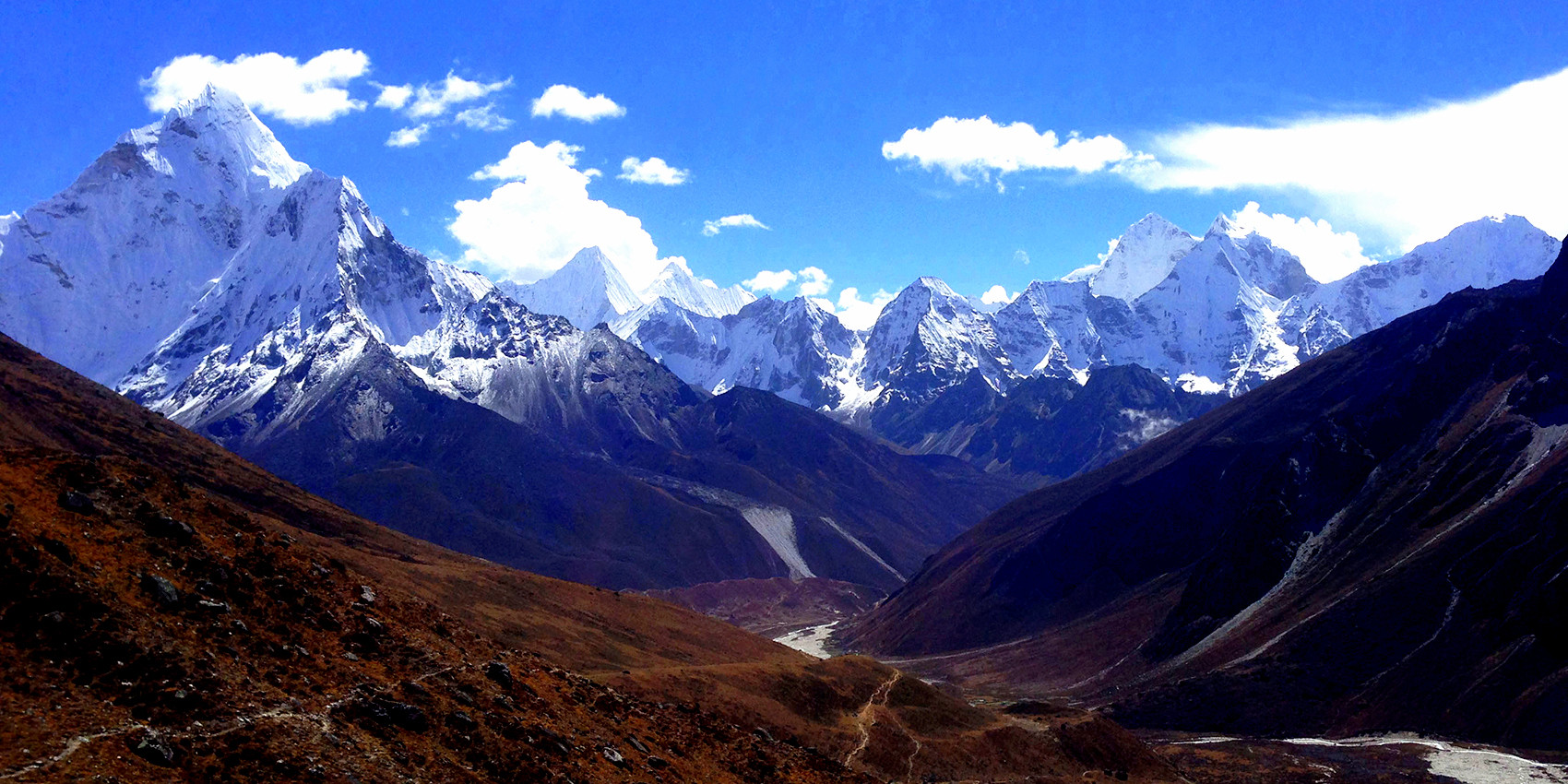
Overview
-
Duration: The trek usually takes about 18 to 21 days, depending on pace and acclimatization stops.
-
Starting Point: Like most treks in the Everest area, it begins with a flight from Kathmandu to Lukla.
-
Altitude: The trek crosses three high passes: Kongma La (5,535 meters, 18,159 feet), Cho La (5,420 meters, 17,782 feet), and Renjo La (5,360 meters, 17,585 feet).
Highlights
-
Kongma La Pass: The first of the three passes offers some of the most dramatic scenery on the route, with views of lakes and glaciers beneath towering peaks.
-
Cho La Pass: This pass requires navigating across a glacier, making it both challenging and thrilling, with superb views of Ama Dablam and other peaks.
-
Renjo La Pass: Provides one of the best panoramic views of the entire Everest range, including an excellent view of Everest itself.
-
EBC and Kala Patthar: The trek includes visits to Everest Base Camp (EBC) and an ascent of Kala Patthar for classic views of Everest and the surrounding mountains.
-
Gokyo Lakes and Gokyo Ri: Trek through the stunning Gokyo Valley with its emerald lakes and ascend Gokyo Ri for more breathtaking mountain vistas.
-
Sherpa Culture: Experience the rich culture of the Sherpa people, visiting monasteries and villages throughout the Khumbu region.
The Three Passes Trek is an ultimate trekking challenge that offers everything from high mountain passes and stunning views to insights into local Sherpa culture, making it a must-do for serious trekkers seeking the adventure of a lifetime in the Everest region.
Tips for Top Treks in Nepal During the Fall
Trekking in Nepal during the fall offers one of the best outdoor experiences, thanks to the clear skies, stable weather, and cultural festivities. To ensure a successful trekking adventure, here are some essential tips for tackling the top treks in Nepal during the fall season:
-
Plan and Book in Advance: Fall is the peak trekking season in Nepal. Accommodations, flights, and guides can get booked quickly, especially in popular areas like Everest Base Camp and the Annapurna Circuit. Plan your trip well in advance and secure all necessary bookings early to avoid last-minute hassles.
-
Acquire Necessary Permits: Many trekking areas in Nepal require permits, such as the TIMS (Trekkers' Information Management System) card and national park or conservation area permits. Some areas like Upper Mustang and Manaslu also require special restricted area permits. Ensure you have all the necessary paperwork completed before starting your trek.
-
Pack Appropriately: Weather during the fall can vary from warm days to cold nights. Packing layers is essential; include thermal base layers, a fleece or down mid-layer, and a waterproof and windproof outer layer. Don’t forget a warm hat, gloves, and a good quality sleeping bag rated for the temperatures you will encounter.
-
Prepare for Altitude: Many treks in Nepal reach high altitudes where altitude sickness is a risk. Prepare by acclimatizing properly: ascend slowly, drink plenty of water, and consider spending extra days at key altitudes to adjust. Understand the symptoms of altitude sickness and know when to descend if they develop.
-
Hire a Guide or Join a Group: For many treks in Nepal, especially in remote or restricted areas, hiring a guide is either advisable or mandatory. Guides not only provide valuable insights and information about the local culture and environment but also enhance your safety on the trail. Joining a group can also be more economical and socially enriching.
-
Respect Local Customs and Traditions: Nepal is rich in cultural diversity, with many different ethnic groups and traditions. Be respectful of local customs, dress modestly, ask permission before taking photographs of people, and be mindful of local etiquette, especially during visits to monasteries and temples.
-
Be Prepared for All Weather Conditions: While fall generally offers stable and clear weather, conditions can change rapidly in the mountains. Be prepared for the possibility of sudden weather changes by carrying waterproof gear and being ready to adjust your trekking plan if necessary.
-
Stay Healthy: Take precautions to avoid common health issues. Use water purification tablets or a water filter to treat drinking water. Bring a first-aid kit equipped with treatments for common ailments such as blisters, diarrhea, headaches, and minor injuries. Wash your hands regularly, and be cautious with food hygiene.
-
Carry Cash: ATMs and credit card facilities are scarce once you leave major towns. Carry sufficient Nepalese currency in smaller denominations to cover expenses such as meals, accommodations, and tips.
-
Sustainable Trekking Practices: Minimize your environmental impact by disposing of waste properly, using biodegradable products, and avoiding single-use plastics. Support local economies by buying local products and using local services.
Following these tips will help ensure that your trek in Nepal is not only enjoyable but also safe and respectful of the environment and local cultures. Whether you’re scaling high passes or exploring ancient trails, preparation is key to a memorable adventure.
An unforgettable trip, trekking in Nepal in the autumn presents one-of-a-kind mountain views, lively cultural interactions, and perfect hiking conditions. Trekkers can completely enjoy all these amazing trails by preparing ahead, packing wisely, and honoring both the surroundings and regional traditions. Remember to balance safety by acclimating correctly to altitude, staying well hydrated, and being ready for different weather conditions. If you hire a knowledgeable guide, your knowledge of the area will also improve and your trip will be safer. Your journey in the Himalayas will be an enriching one guaranteed to leave long memories with these ideas in hand.
FAQs for Top Treks in Nepal During the Fall
Q: Why is fall considered the best time for trekking in Nepal?
A: Fall (September to November) is ideal for trekking due to stable weather, clear skies, and moderate temperatures. The visibility is excellent, providing breathtaking views of the Himalayas, and the trails are generally dry and safe.
Q: What are the most popular treks in Nepal during the fall?
A: The most popular treks include the Everest Base Camp Trek, Annapurna Circuit Trek, Manaslu Circuit Trek, Langtang Valley Trek, Ghorepani Poon Hill Trek, and Upper Mustang Trek.
Q: What kind of weather can I expect during the fall trekking season in Nepal?
A: Daytime temperatures can range from 20°C in lower elevations to 5°C in higher areas, with nights much colder, especially at higher elevations. Weather is generally clear, though mornings can start foggy.
Q: Do I need a guide for trekking in Nepal during the fall?
A: While not mandatory for all treks, hiring a guide is highly recommended for enhancing safety, providing valuable insights, and assisting in emergencies.
Q: What should I pack for a fall trek in Nepal?
A: Essential items include layered clothing, waterproof and windproof jackets, trekking boots, a sleeping bag suitable for low temperatures, sunglasses, sunscreen, hat, gloves, a first aid kit, and a headlamp.
Q: Are trekking permits required for trekking in Nepal during the fall?
A: Yes, trekking permits like a TIMS card and region-specific permits such as the Annapurna Conservation Area Permit or Sagarmatha National Park Permit are required depending on the trek.
Q: What are the risks of trekking in Nepal during the fall?
A: Main risks include altitude sickness, sudden weather changes, and trail accidents. Proper acclimatization, staying informed about the weather, and following safety guidelines are crucial.
Q: Can I participate in local festivals during my fall trek in Nepal?
A: Yes, fall coincides with major festivals like Dashain and Tihar. Many treks offer opportunities to experience these festivals in local villages.
Q: How crowded are the trails during the fall trekking season?
A: Fall is a peak trekking season, so popular trails can be busy. If you prefer a quieter experience, consider lesser-known routes like Upper Mustang or Manaslu.
For the Nepal tour, please click here.
If you are looking for different kinds of Nepal Tours or Trekking Packages, feel free to contact us.
